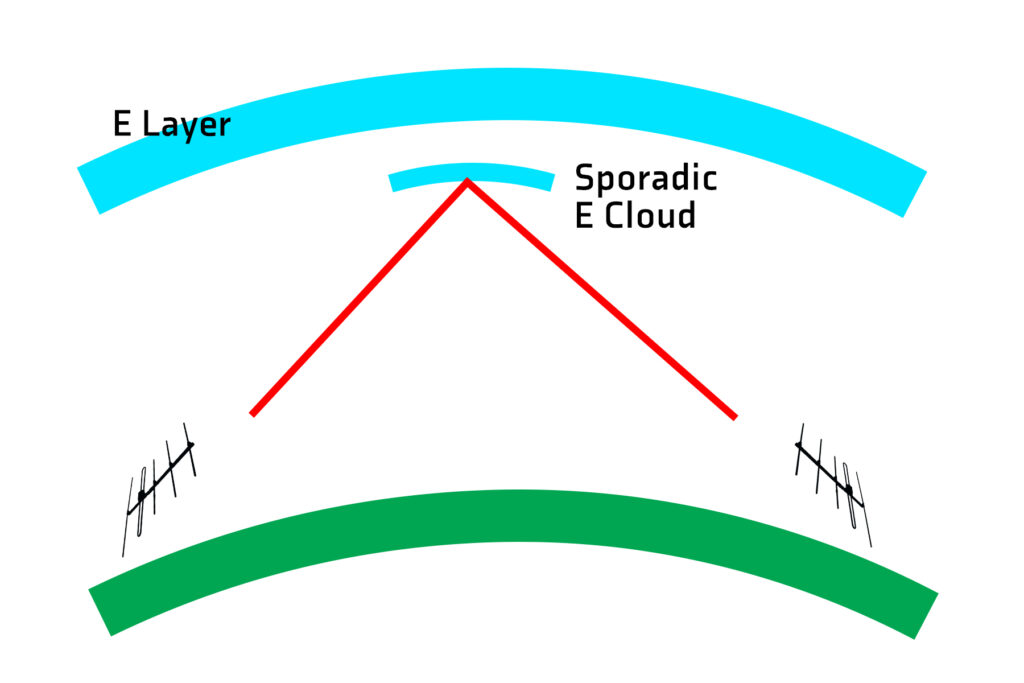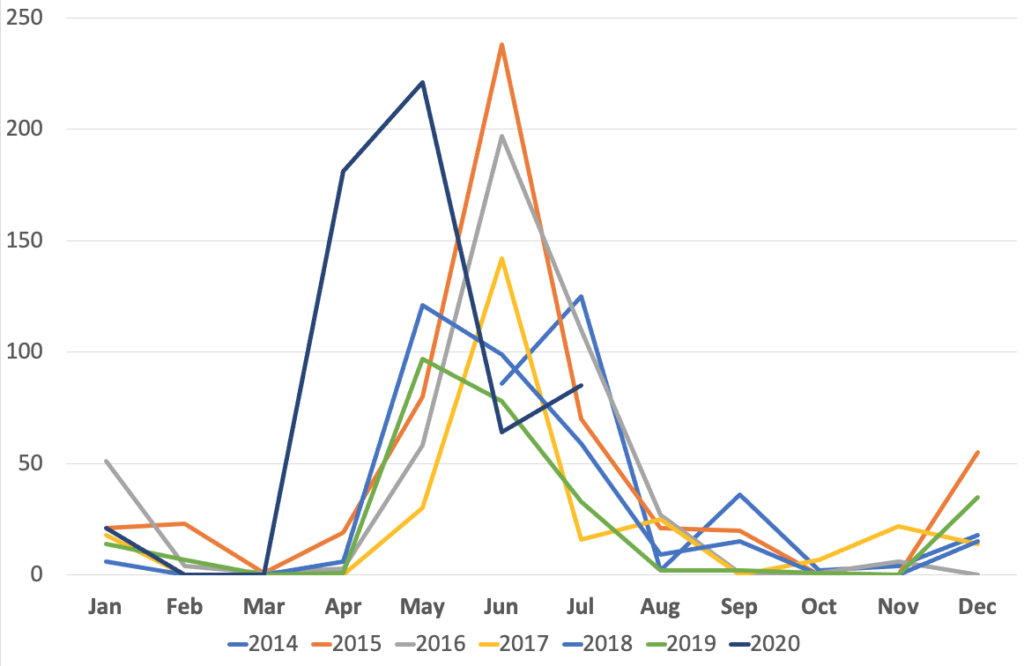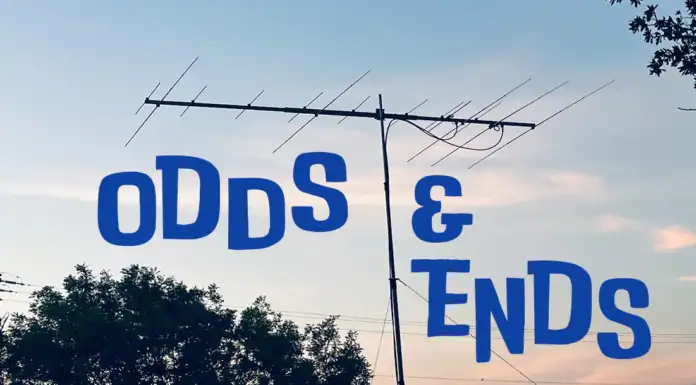It’s about this time of year that we yearn for Sporadic E to come back with the same force it was here in May through July. Alas, probably not going to happen, but we still need to watch for those openings.
Here’s an excerpt on Sporadic E propagation from my short eBook titled “Capture the MAGIC of Six Meters.” Follow the link below to download the full book.
Sporadic E
I claim that this propagation mode is called magic because no one really knows why it happens. There are several theories. Whatever the cause, the challenge is predicting when Es will happen. Next is determining how best to take advantage when Es does happen.
The theory that I like is documented in a doctoral dissertation by Christina Arras dated 2010 titled A Global Survey of Sporadic E Layers based on GPS Radio Occultations. Her research focuses on measuring Sporadic E and its effect on GPS satellite signals. You can find it on Carl Luetzelschwab’s, K9LA, website at http://www.k9la.us/PhD_Thesis_on_Sporadic_E_by_Christina_Arras.pdf
I’ve borrowed her illustration, below, that shows wind shear compressing metallic ions from micro-meteors into ionized clouds in the E layer.
Seasonal variations are thought to be due to changing meteor dust trails that the Earth encounters in the Northern Hemisphere in June, July, and August and in the Southern Hemisphere in February and March.
The illustration below is also from her dissertation. It shows the occurrence rate of Sporadic E by season in 2008, plotted from her GPS satellite data.
From this it looks like the rate of Es openings in North America for 2008 was fairly low compared to much of the rest of the Northern Hemisphere. Just think about the magic band in those areas!
Of course, her data is via L-band GPS satellites rather than 50 MHz signals from Earth, but it should give us a better understanding of this phenomenon. Not only that, but the information above does correlate with our own experiences with Es openings.
Here’s my own crude illustration of a sporadic E cloud. DX Maps does a great job of showing where the cloud is with the propagation on all sides out to about 1,500 miles for single hop.
The key, of course, is determining when the cloud appears and getting everyone on the air who are in the right places to make QSOs. Six meter beacons can help with that effort. But it seems to me that many, many more people are on the air using FT8’s weak signal capabilities. As a result, I feel we’re finding many more openings than in the past.
One thing that I see on the air is the movement of the Sporadic E cloud. It can start near the east coast and gradually move across the USA. It can also move a bit north and, as a result, leave ol’ Texas behind. It’s pretty interesting to observe these things over time.
Note that Sporadic E can extend to the 2 meter band at times of exceptional ionization.
In the chart below I’ve gathered all my own six meter QSOs and plotted them by month and year. This has been my experience on six meters over the years with most activity in May, June, and July. It was interesting to see April pick up in 2020. Perhaps that’s an FT8 phenomenon. It could also be a COVID Stay-At-Home phenomenon.
Please note that there is a great deal of variation in my numbers. For example, in July 2017 I was at the National Scout Jamboree and July 2019 at the World Scout Jamboree. Plus, all VHF contests since 2018 have been as a rover — so those QSOs are not shown.
For those of you interested in more information about Sporadic E, there is a nice presentation from the RSGB 2018 Convention provided by Jim Bacon, G3YLA, at this link on YouTube Sporadic E Revisted.











[…] TermsTasmania, “Switzerland of the South”Dick Smith, VK2DIK – electronic kits “Funway”Funway Crystal RadioKenwood TS-120V TransceiverAmateur Radio CallbookWireless Institute of AustraliaAustralia Amateur Radio Novice LimitedAustralia Radio and Electronics School CoursesTAFE course apprenticeship AustraliaCollege Versus University AustraliaSystems Administrator for Unified CommunicationsWSPR Mode10 Meter RepeaterMobile Radio Flutter VHFSolar Cycle 25Andrews LDF7-50A Heliax Hardline Build a 6 Meter Duplexer using HardlineSplit Site Repeater 10 MeterVK7RCH Repeater DuplexerVKLink- VK only version of Allstar private networkRaspberryPiMatt VK3VS – wrote the VKLink codeAllstar LinkAllstar Link Voting Receiver SystemGPS Locked Simulcast TransmitterHam Radio DX YouTube Channel Microwave TransverterJosh Nash – Ham Radio Crash CoursePeter Parker VK3YECricketAmateur Radio Parks on the Air (POTA)6 Meter Sporadic E […]